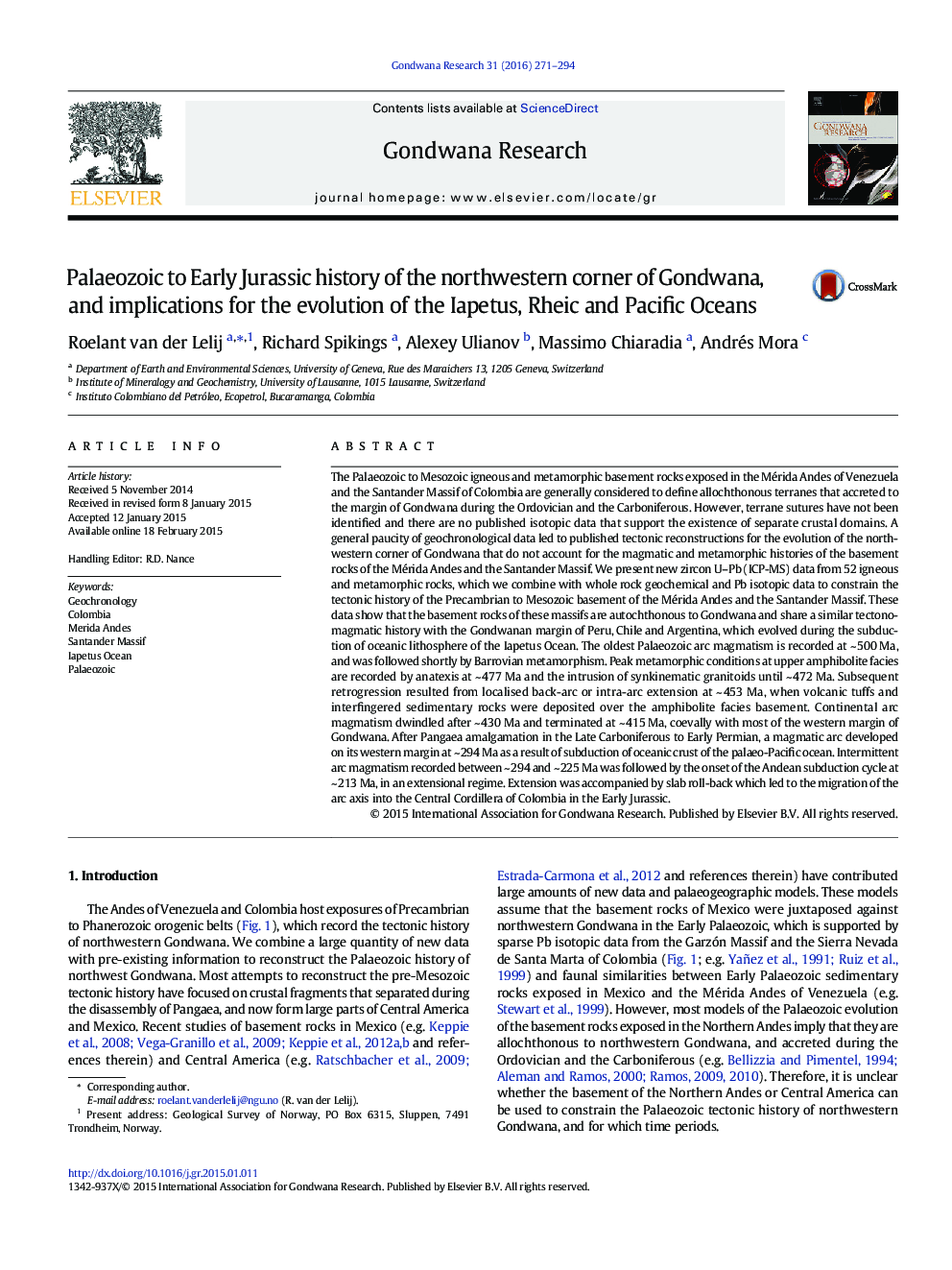| کد مقاله | کد نشریه | سال انتشار | مقاله انگلیسی | نسخه تمام متن |
|---|---|---|---|---|
| 4726684 | 1640140 | 2016 | 24 صفحه PDF | دانلود رایگان |

• The Northern Andes host the relics of Palaeozoic and Mesozoic active margins.
• We document compressive and extensional episodes in the Palaeozoic and Mesozoic.
• There is no evidence for allochthonous terranes in the studied massifs.
The Palaeozoic to Mesozoic igneous and metamorphic basement rocks exposed in the Mérida Andes of Venezuela and the Santander Massif of Colombia are generally considered to define allochthonous terranes that accreted to the margin of Gondwana during the Ordovician and the Carboniferous. However, terrane sutures have not been identified and there are no published isotopic data that support the existence of separate crustal domains. A general paucity of geochronological data led to published tectonic reconstructions for the evolution of the northwestern corner of Gondwana that do not account for the magmatic and metamorphic histories of the basement rocks of the Mérida Andes and the Santander Massif. We present new zircon U–Pb (ICP-MS) data from 52 igneous and metamorphic rocks, which we combine with whole rock geochemical and Pb isotopic data to constrain the tectonic history of the Precambrian to Mesozoic basement of the Mérida Andes and the Santander Massif. These data show that the basement rocks of these massifs are autochthonous to Gondwana and share a similar tectono-magmatic history with the Gondwanan margin of Peru, Chile and Argentina, which evolved during the subduction of oceanic lithosphere of the Iapetus Ocean. The oldest Palaeozoic arc magmatism is recorded at ~ 500 Ma, and was followed shortly by Barrovian metamorphism. Peak metamorphic conditions at upper amphibolite facies are recorded by anatexis at ~ 477 Ma and the intrusion of synkinematic granitoids until ~ 472 Ma. Subsequent retrogression resulted from localised back-arc or intra-arc extension at ~ 453 Ma, when volcanic tuffs and interfingered sedimentary rocks were deposited over the amphibolite facies basement. Continental arc magmatism dwindled after ~ 430 Ma and terminated at ~ 415 Ma, coevally with most of the western margin of Gondwana. After Pangaea amalgamation in the Late Carboniferous to Early Permian, a magmatic arc developed on its western margin at ~ 294 Ma as a result of subduction of oceanic crust of the palaeo-Pacific ocean. Intermittent arc magmatism recorded between ~ 294 and ~ 225 Ma was followed by the onset of the Andean subduction cycle at ~ 213 Ma, in an extensional regime. Extension was accompanied by slab roll-back which led to the migration of the arc axis into the Central Cordillera of Colombia in the Early Jurassic.
Figure optionsDownload as PowerPoint slide
Journal: Gondwana Research - Volume 31, March 2016, Pages 271–294